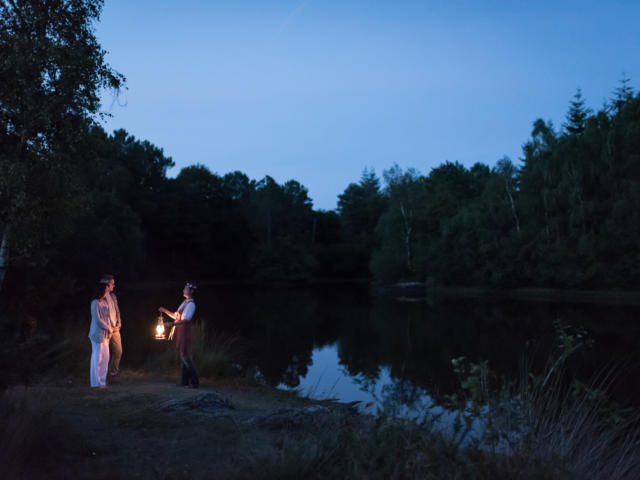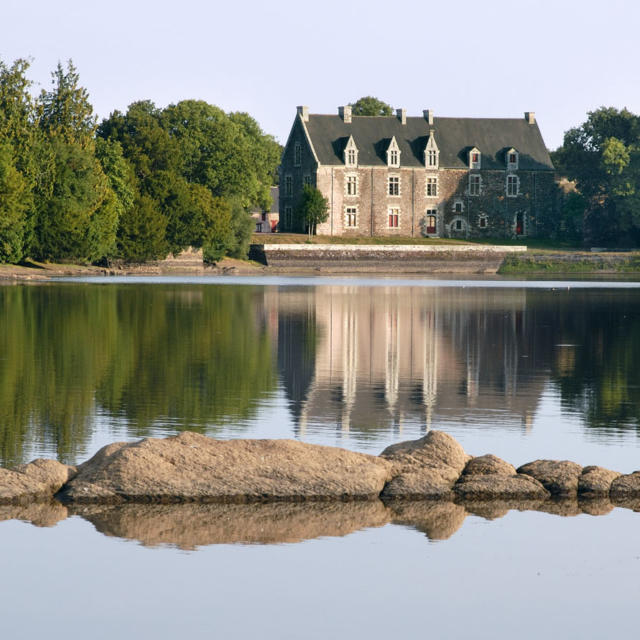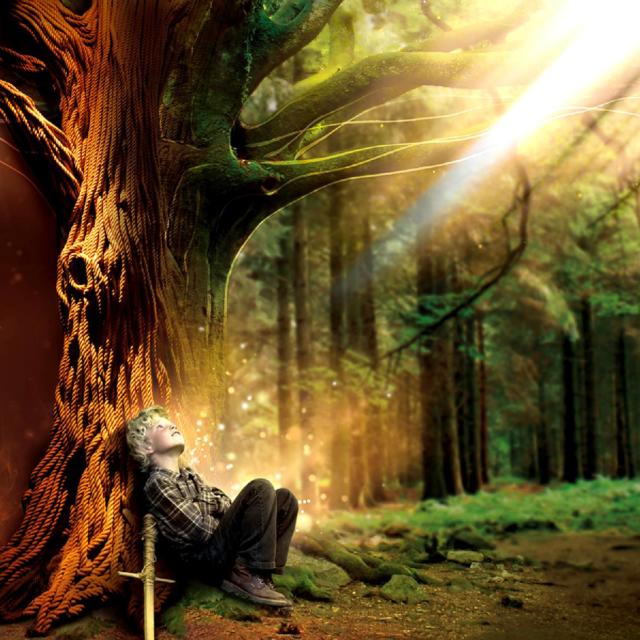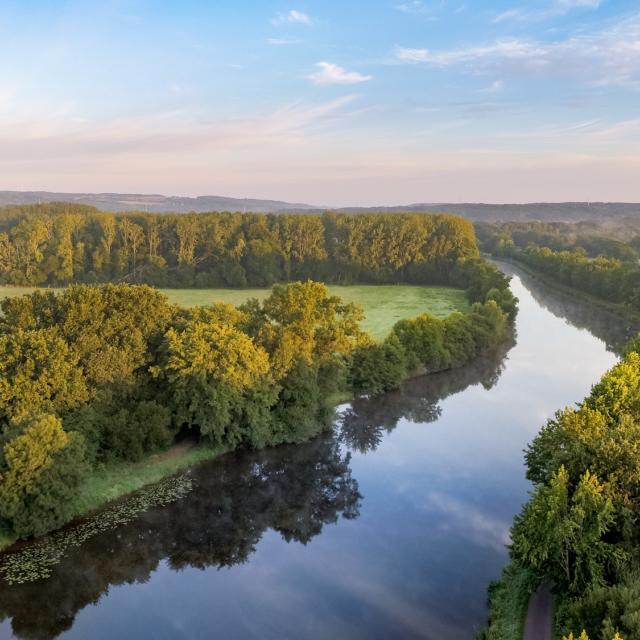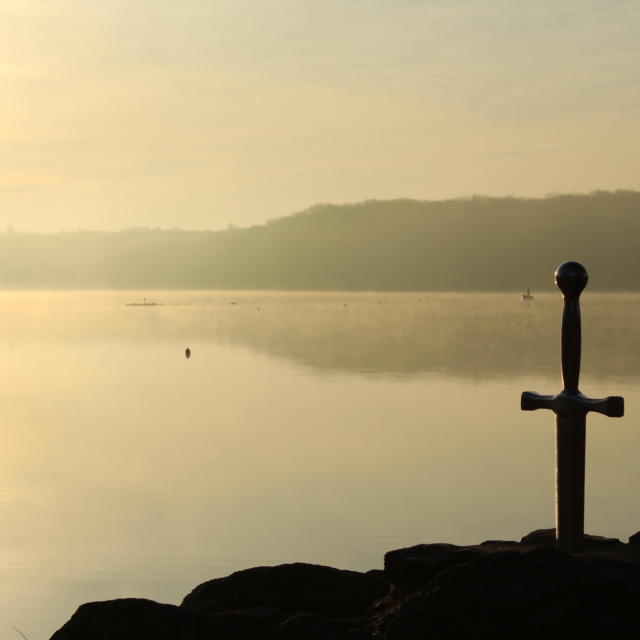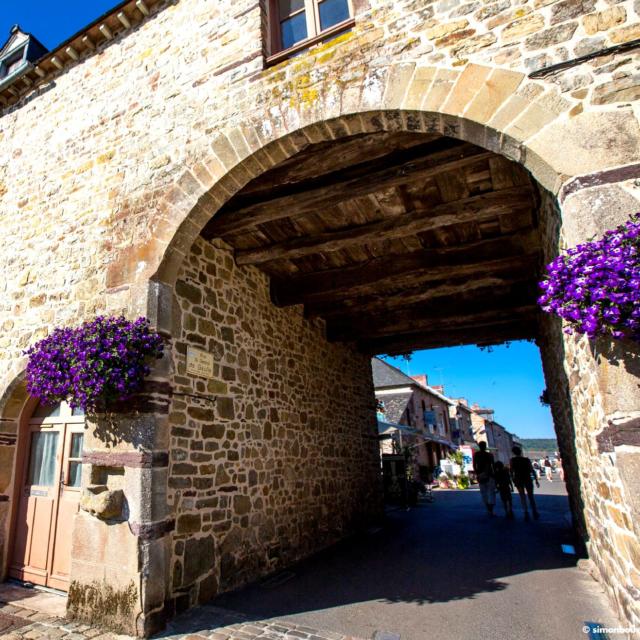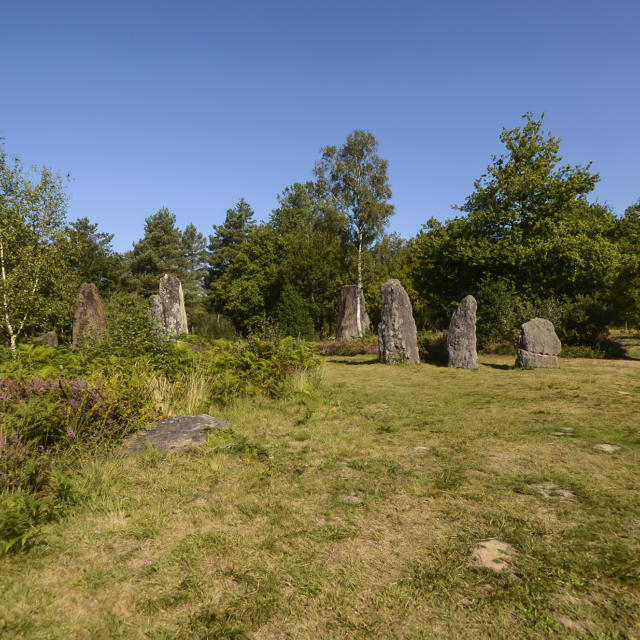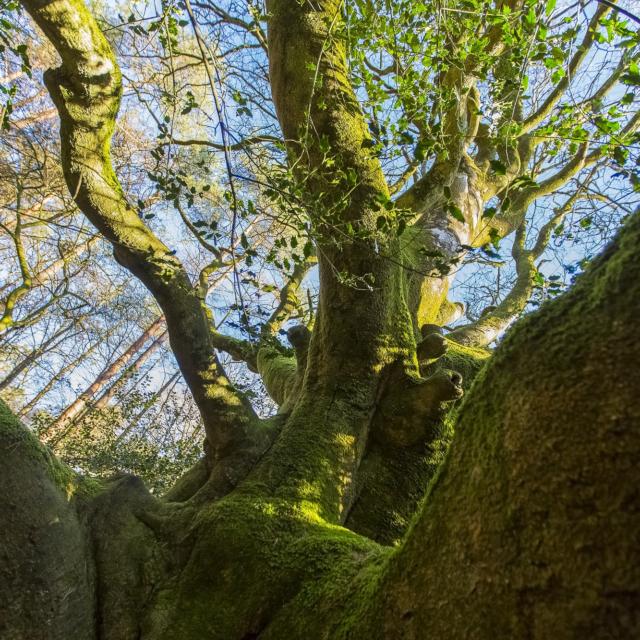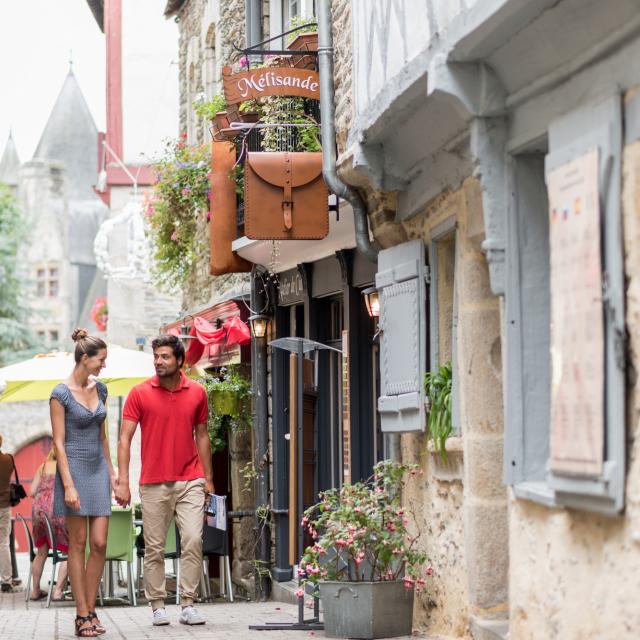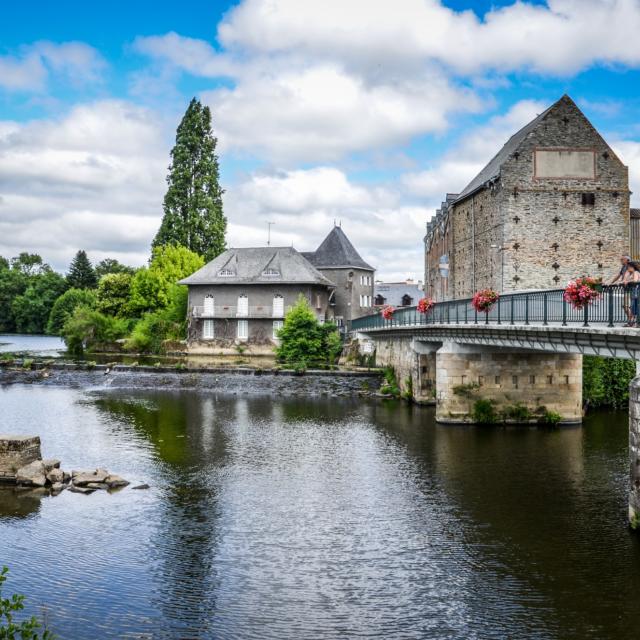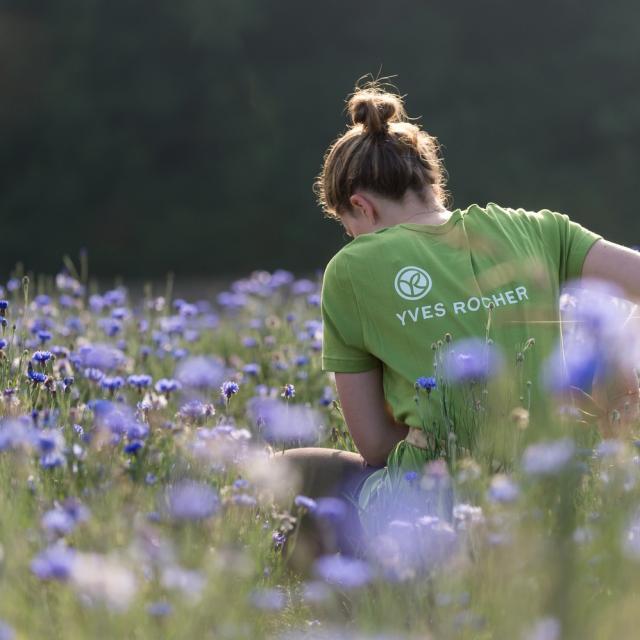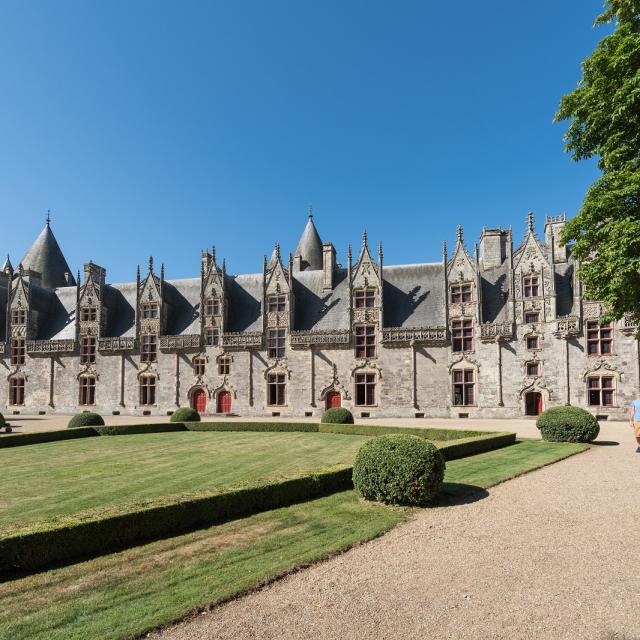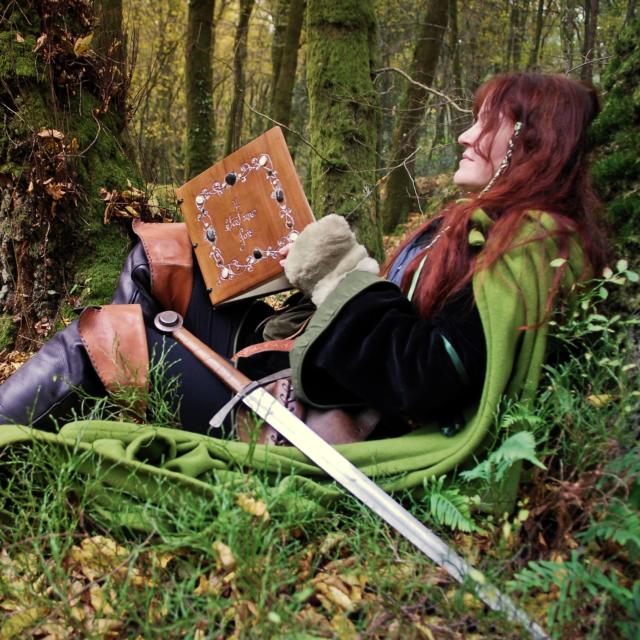 Les fées de Brocéliande
Les fées de Brocéliande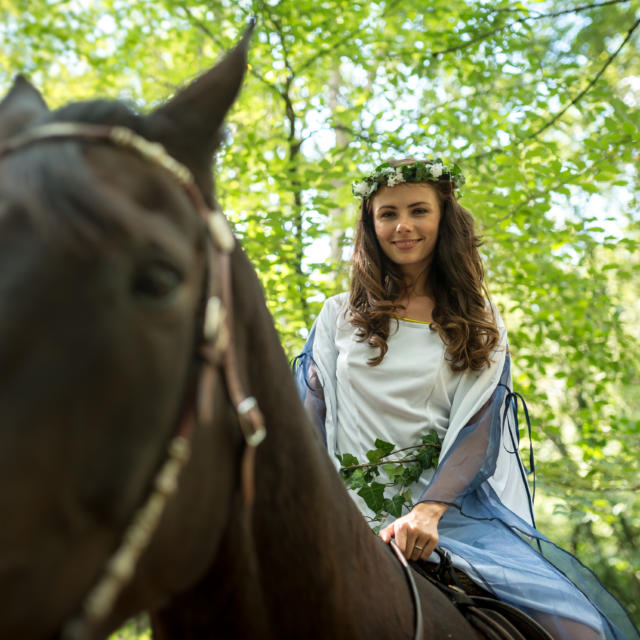 Fée, à cheval près du Val sans Retour
Fée, à cheval près du Val sans Retour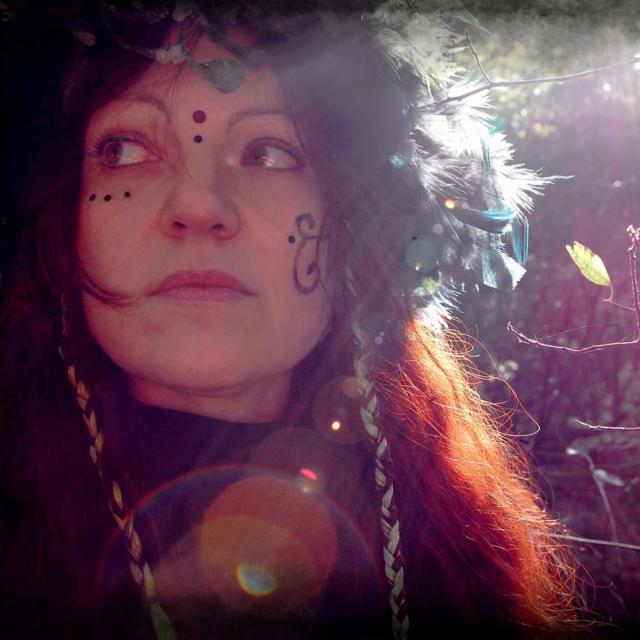 Les fées de Brocéliande
Les fées de BrocéliandeWhat, the fairy hasn’t always existed?
The fairy appears, under this precise name, in the twelfth century. In a time when the Christian faith seems the most ardent. With it erupts a whole people from before Christianity: enchanters, knights without equal, forests and enchanted islands, moors full of evil spells, hideous giants, glittering dragons and magical swords. Their nature, their role, make them the heirs of the messengers of the Other World in the stories of ancient Ireland.
It is true, supernatural or divine women exist in all cultures. But the fairy has her origins in the medieval West and, although inhabiting an Otherworld, she takes a close interest in the affairs of mortals. For the first function of these beautiful ladies is to direct the destiny of men. They can love and hate, protect, marry, give wealth or children to those they have chosen.
They are not omnipotent deities: all fairies have powers, none of them has all of them. They even need humans. Near them, they come to look for help, love, children sometimes, that they steal or that they give birth to after the union with the most beautiful and the most courageous of men.
To define the fairy? Mission almost impossible. In her are mixed several mythical figures. Neither goddess, nor nymph, nor dryad, she holds however of the three. They provoke, direct, put an end to life, like the Roman Fates or the Greek Moires. But they have also inherited the role of the Celtic divine triads whose cult has long remained alive in our regions.
The word fairy
Fairy is of Celtic origin, but its name comes from fata, the same root as fatum, which means “fate”. This word was originally a noun and adjective at the same time. It designates in its first form of fae, preserved in English in faery, all that is endowed with a supernatural essence: tree, castle, horse, knight, etc. But the fairy lady wins, and very quickly the qualifier and then the name designate her alone.
And here is the good godmother and her wand!
In the sixteenth century, in Italy, a new fashion of tales was created, short stories and reserved for adults. The French seventeenth takes over. With or without supernatural ladies, the tales become fairy tales and will remain so. It is the time of the good godmothers, the appearance of the magic wand.
Madame d’Aulnoy, Catherine Bernard, the Countess of Aulneuil wrote fairy tales, but it was Perrault who, in 1695, became the reference author of the genre. In the XVIIIth century, Suzanne Barbot de Villeneuve and Madame Leprince de Beaumont used the fairy tale to educate the youth. And their works spread in the bourgeoisie and in the countryside. In two generations, the “literary” tales become “popular” again and their origin is forgotten.
With or without wings?
How, from the fairies of the Middle Ages, so similar to humans, did we get to the little winged fairies, tiny and vibrant souls of nature? A short detour to Great Britain…
In England, in the 16th century, Shakespeare miniaturized them and gave them wings. He was inspired by popular traditions and classical deities. After him, and for a long time, fairies will look like Mab or Titania, goblins will evoke Puck and Oberon will reign over the fairy lands. This marvelous appearance is tinged with rationalization. The wings deny the power that fairies had to fly naturally. They become a hybrid of human and insect, and their small size makes them less powerful and less desirable. In the 19th century, a host of images of these miniature fairies emerged in the United Kingdom. The phenomenon called “fairy painting” was all the rage. The contemporary illustration of fairies still draws its inspiration and its codes largely from this “golden age” of fairy painting. As for the fairy costume, after a long period in the 18th century, still very much appreciated across the Atlantic, it is now returning to Celtic-medieval inspiration…

